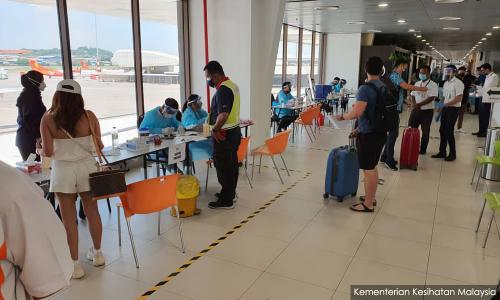LETTER | Planning and preparing for tourism recovery
LETTER | After rising sharply for five continuous months from April, Covid-19 infections have started to decline in September, dropping to 499,441 cases compared with 632,982 in August.
This year, the average number of daily cases was lowest in March at only 1,443 cases per day and went up to 2,107 in April, shot up to 5,279 in May and 5,987 in June.
Then it rocketed to 11,655 in July and hit the roof in August with an average of 20,419 cases daily.
Mercifully, it dropped to 16,648 in September.
While the daily average was 18,979 cases in the first half of the month, it dropped significantly to 14,317 in the second half. This trajectory will continue in October and very soon, the number will drop below 10,000.
Pilot destination
Without any delay, the Tourism, Arts and Culture Ministry announced on Sept 9 that Langkawi will be launched as a pilot destination to be reopened to fully vaccinated local tourists beginning Sept 16.
The ministry also organised a three-day workshop on the island to revise the 'Travel and Tours Enhancement Course' which was attended by 34 participants, mainly from the Klang Valley.
I was among those who flew to Langkawi on Sept 29 from klia2. At the airport, I underwent a Covid-19 test using a Rapid Test Kit (RTK) Antigen that I had brought along.
Instead of using a long nasal swap to be inserted deep into both nostrils, all I had to do was to spit my saliva through a tiny funnel and the sample would show the results in 15 minutes.
After being tested negative, I was allowed to enter the departure hall and found many passengers were already at the gate, as most have arrived very early. The aircraft was almost fully loaded.
Prior testing
Unfortunately, the results of several workshop participants were positive. Surprised and unconvinced, they went for a laboratory test and were certified negative. All managed to arrive Langkawi later.
In hindsight, it is safer to have prior testing instead of doing it at the airport, particularly for families travelling in a group, as everyone could be stranded if just one is found positive.
The Langkawi travel bubble is indeed critical to revitalise tourism, as valuable lessons and experience could be gleaned from this pilot project by both tourists and service providers.
The views expressed here are those of the author/contributor and do not necessarily represent the views of Malaysiakini.
RM12.50 / month
- Unlimited access to award-winning journalism
- Comment and share your opinions on all our articles
- Gift interesting stories to your friends
- Tax deductable
